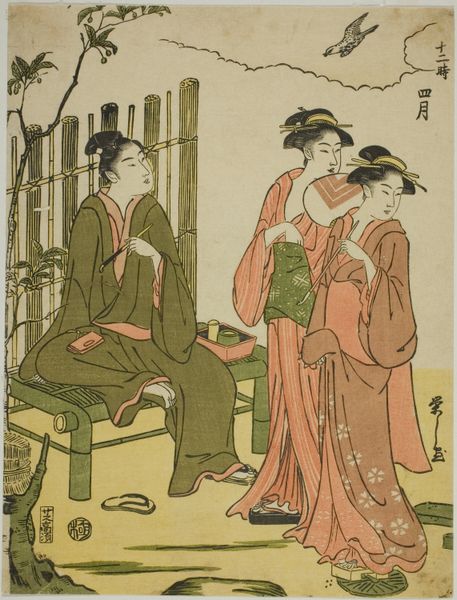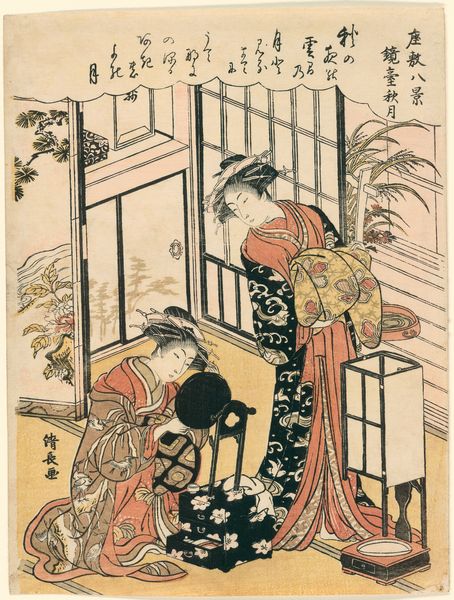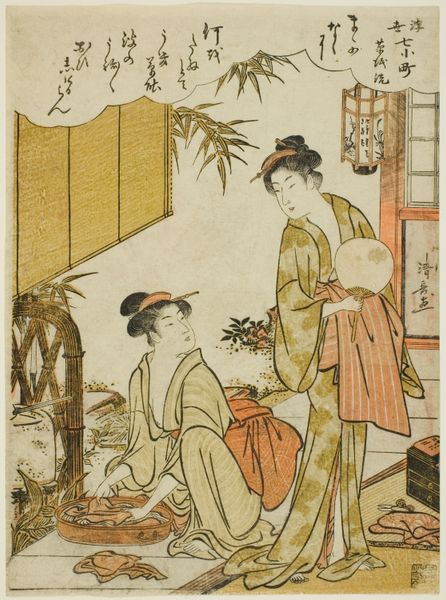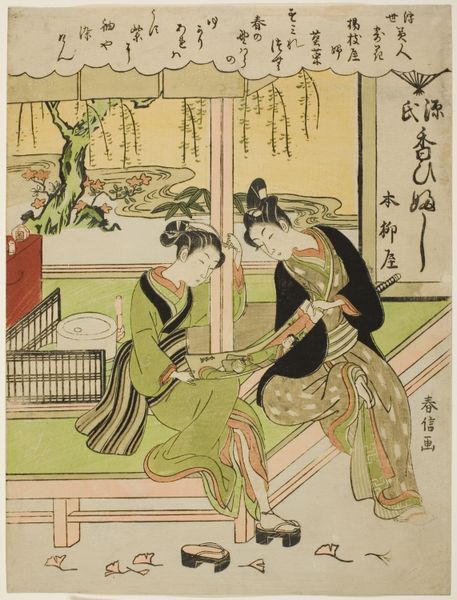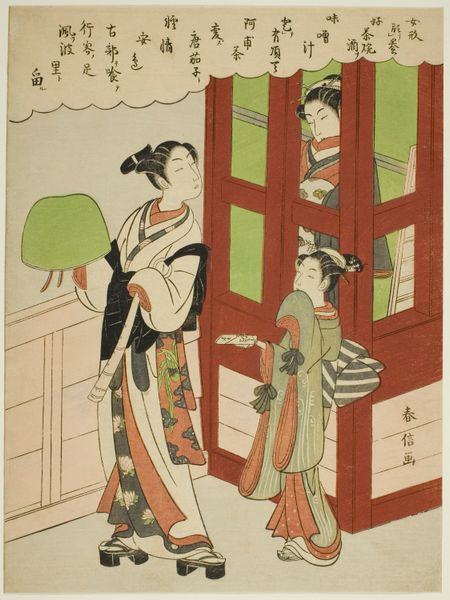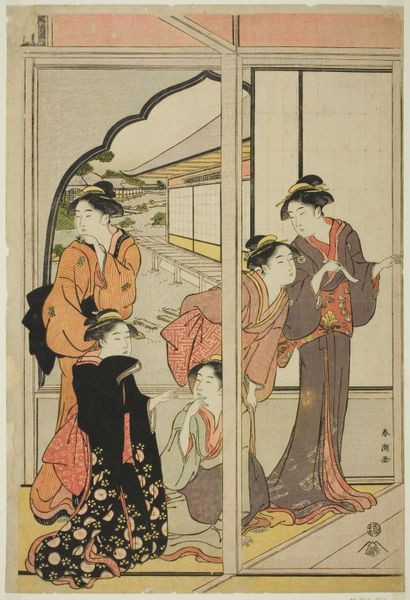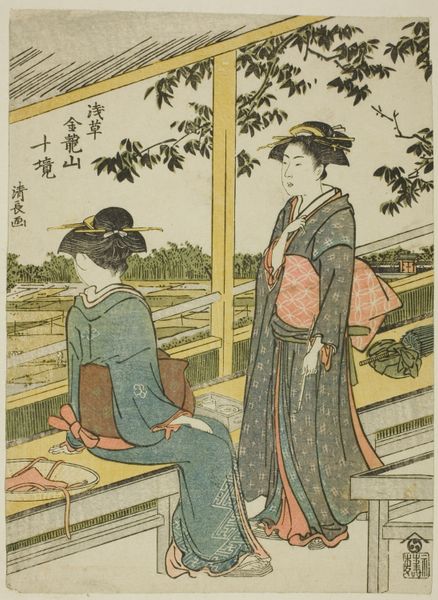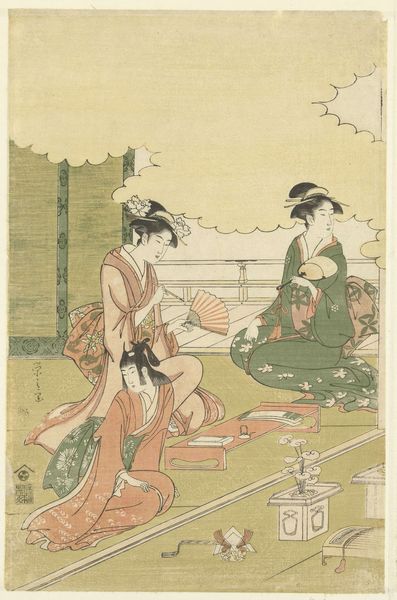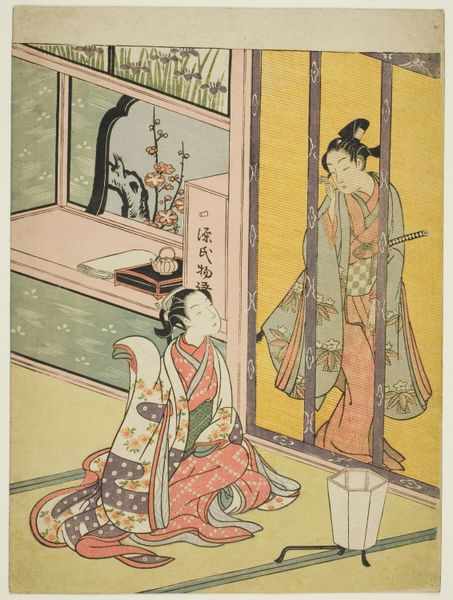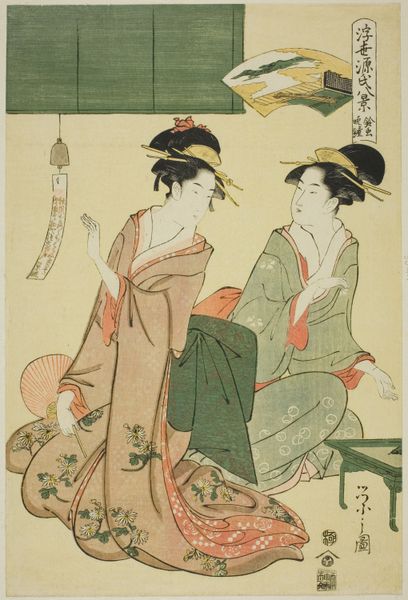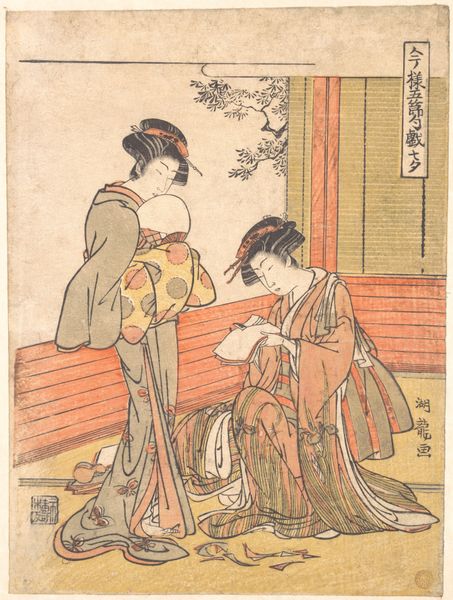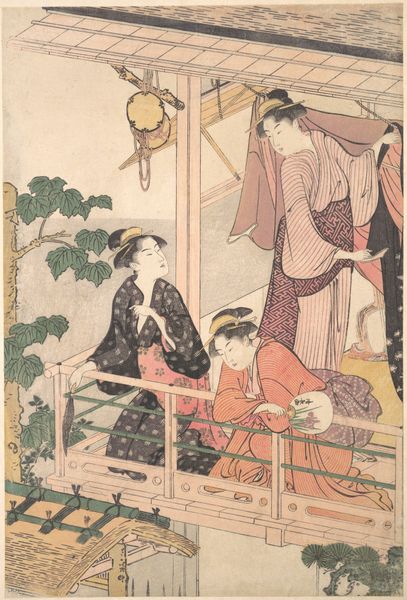
Ono no Komachi, from the series A Collection of Fashionable Beauties of Japan (Wakoku bijin ryaku shu) Possibly 1615 - 1868
0:00
0:00
print, woodblock-print
#
portrait
# print
#
asian-art
#
ukiyo-e
#
japan
#
woodblock-print
#
genre-painting
Dimensions: 26.6 × 19.1 cm
Copyright: Public Domain
Curator: Before us, we have "Ono no Komachi, from the series A Collection of Fashionable Beauties of Japan (Wakoku bijin ryaku shu)," a woodblock print from sometime between 1615 and 1868, currently residing at the Art Institute of Chicago. Editor: Immediately, I’m drawn to the lines—crisp and elegant—and the flat planes of color. It’s all very deliberate in its design. It’s beautiful in a restrained manner, almost austere. Curator: Austere? I see an intentional, if subtle, composition built upon geometric interplay: the grid of the shoji screen contrasted by the soft curves of the figures and blossoming tree behind them. Semiotics reveal a narrative of the inner versus the public self through this duality of rigid lines and natural forms. Editor: I think about the production of this print: the artisans involved, from the drawer to the printer, to the role of publishers, as well as the availability of the colors, the paper-making processes in ukiyo-e prints at the time... the artist used particular resources under socio-economic restraints. Even the very notion of "fashionable beauties" – its manufacturing of social position. Curator: Ah, yes, we mustn’t forget its cultural context—these are, after all, images intended for popular consumption, but note the refined execution of line and the careful selection of color to evoke mood and express the very idea of ‘beauty’. These women and flowers have been crafted as signs of ideals—it is pure artistry. Editor: Exactly, but ‘pure’ can obscure material practices that shape that aesthetic. The flattening of perspective, the stark contrasts, it also points to its function as multiples; mass produced and made widely accessible. It speaks volumes about social structure via aesthetic production and distribution. Curator: I agree, in these elements it functions as a piece of applied design with multiple messages. Both voices seem to intersect here – to be fashionable, to desire an image in a piece such as this, can, indeed, exist with more complex aesthetic principles. Editor: Precisely. By looking closely at both formal qualities and socio-economic structures we see greater complexities and truths revealed about the society in which, and for which, they were made.
Comments
No comments
Be the first to comment and join the conversation on the ultimate creative platform.
